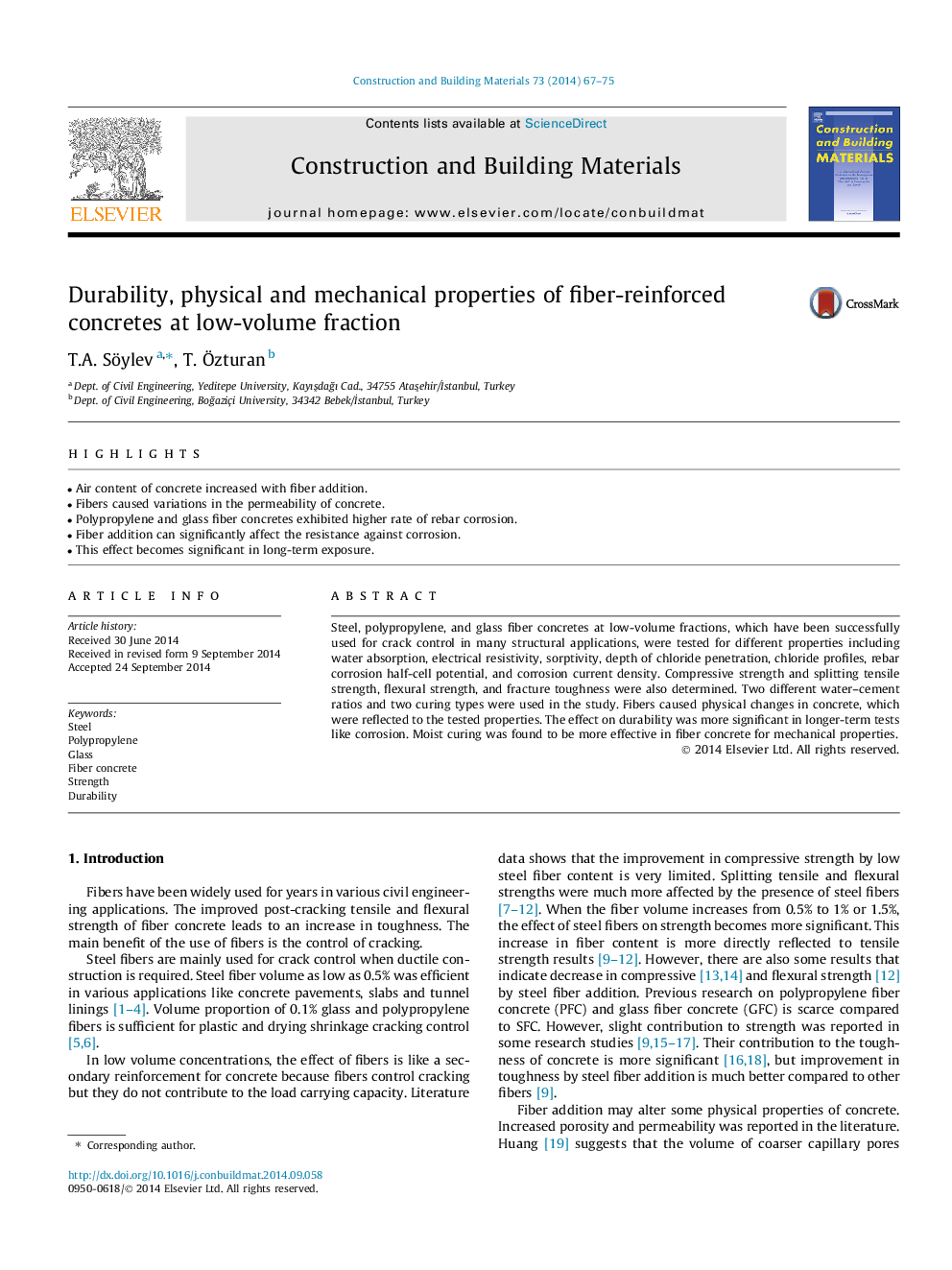| Article ID | Journal | Published Year | Pages | File Type |
|---|---|---|---|---|
| 6721882 | Construction and Building Materials | 2014 | 9 Pages |
Abstract
Steel, polypropylene, and glass fiber concretes at low-volume fractions, which have been successfully used for crack control in many structural applications, were tested for different properties including water absorption, electrical resistivity, sorptivity, depth of chloride penetration, chloride profiles, rebar corrosion half-cell potential, and corrosion current density. Compressive strength and splitting tensile strength, flexural strength, and fracture toughness were also determined. Two different water-cement ratios and two curing types were used in the study. Fibers caused physical changes in concrete, which were reflected to the tested properties. The effect on durability was more significant in longer-term tests like corrosion. Moist curing was found to be more effective in fiber concrete for mechanical properties.
Related Topics
Physical Sciences and Engineering
Engineering
Civil and Structural Engineering
Authors
T.A. Söylev, T. Ãzturan,
